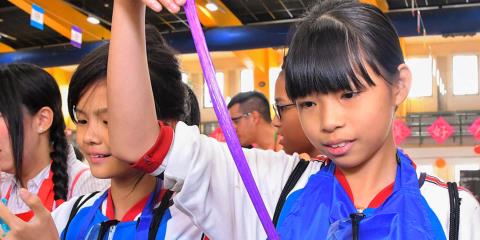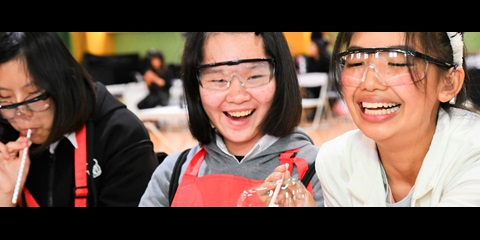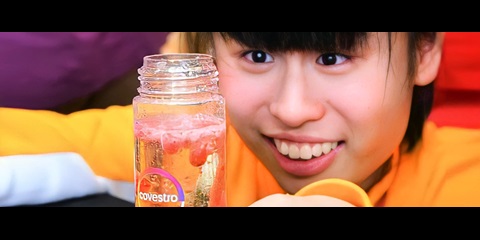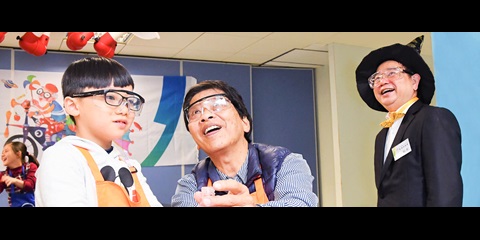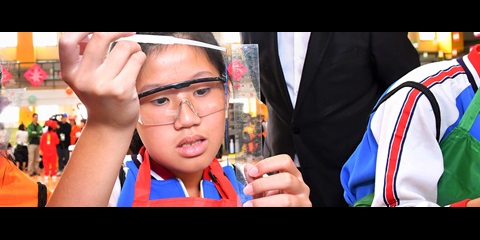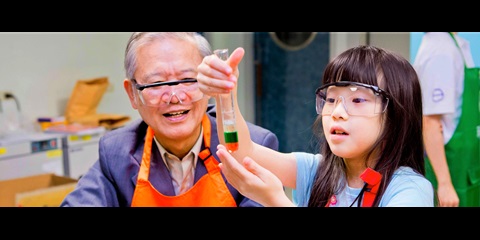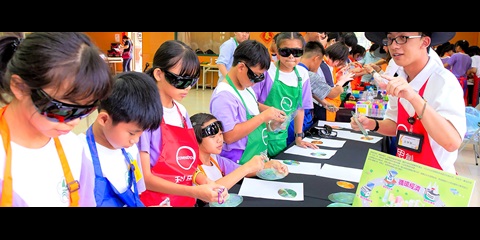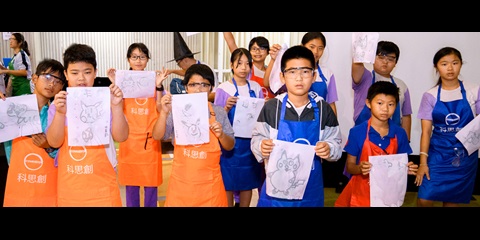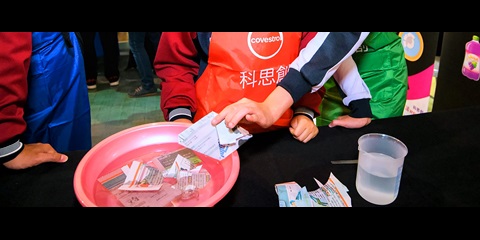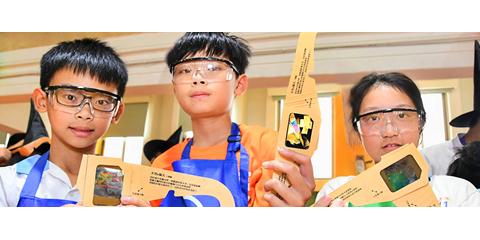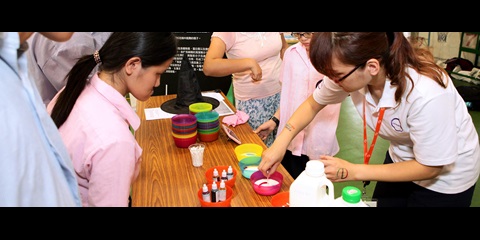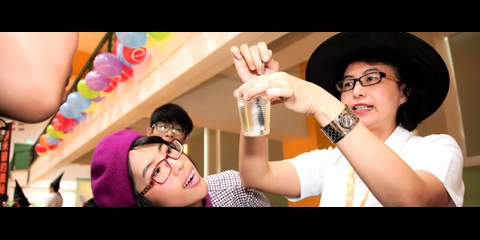
Magical molecular cuisine
You will need:
- Sodium alginate
- Alkali-resistant color solution
- A transparent plastic cup
- A measuring cup
- Calcium lactate
- A plastic spoon and a small paper plate
- A dropper and a thin stirring rod.
Step-by-step instructions:
- Using a 0.5g plastic measuring spoon, measure out a spoonful of sodium alginate powder and put it into a small 30cc cup.
- Pour 25cc of water into a the small 30cc cup and stir evenly, using a stirring rod (letting the sodium alginate solution sit for half an hour after stirring, to allow for dissolution).
- Choose a color that you like and add 2 drops of alkali-resistant color solution to the sodium alginate aqueous solution.
- Use a stirring rod to mix the pigment with the sodium alginate aqueous solution.
- Next, use a 1g plastic measuring spoon to measure out a spoonful of calcium lactate powder and pour it into a 150 cc transparent plastic cup.
- Use a 150 cc measuring cup to measure out 100 cc of water and pour the water into a the 150 cc transparent plastic cup, evenly stirring the resulting mixture with a stirring rod.
- Drip the colorful sodium alginate aqueous solution into the small 30cc cup, using a dropper.
- Next, slowly drop the colorful sodium alginate aqueous solution from the cup into a the 150cc transparent plastic cup containing the calcium lactate solution and… Voila! Colorful pearl balls have been created!
- Use a plastic spoon to remove the pearl balls from the water, then place the finished products onto a small plate, for observation.
- Take the colorful pearls from the plate: pinch them with your fingers, and you will observe the colorful pearl ball’s outer layer film, as well as the flowing liquid inside it!
《Little tips for you》
- The ratio of sodium alginate to water should be 1:50.
The ratio of calcium lactate to water should be 1:100. - When dripping the sodium alginate, the dropper should not touch the surface of the calcium lactate aqueous solution!
How it works:
Sodium alginate is a high molecular weight polymer. When sodium alginate is mixed with calcium lactate, the calcium ions replace the sodium ions within the sodium alginate, causing a “cross-linking reaction”. This cross-linking reaction makes the intermolecular structure more stable, reduces its fluidity, creates a curing effect, and forms a semi-permeable membrane.
If you take a closer look at the chemical pearl balls, you will see that only the outer layer is solid, while the inside is filled with sodium alginate solution. The sodium alginate that has not reacted has been encased by the semi-permeable membrane that has formed following the solidification. When the sodium alginate is soaked in the calcium lactate solution for a longer period of time, the area of the cross-linking reaction that results from the sodium alginate becomes larger, until the whole pearl ball becomes solid.









